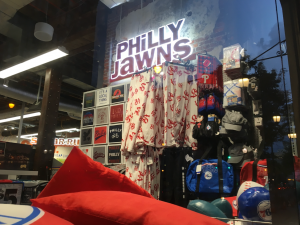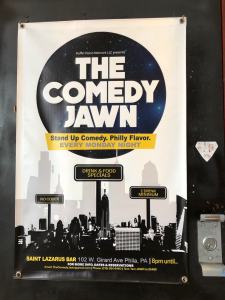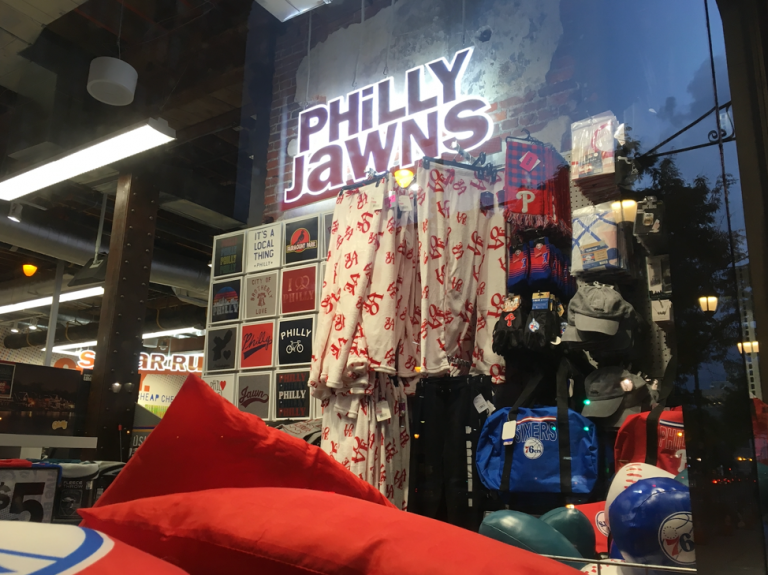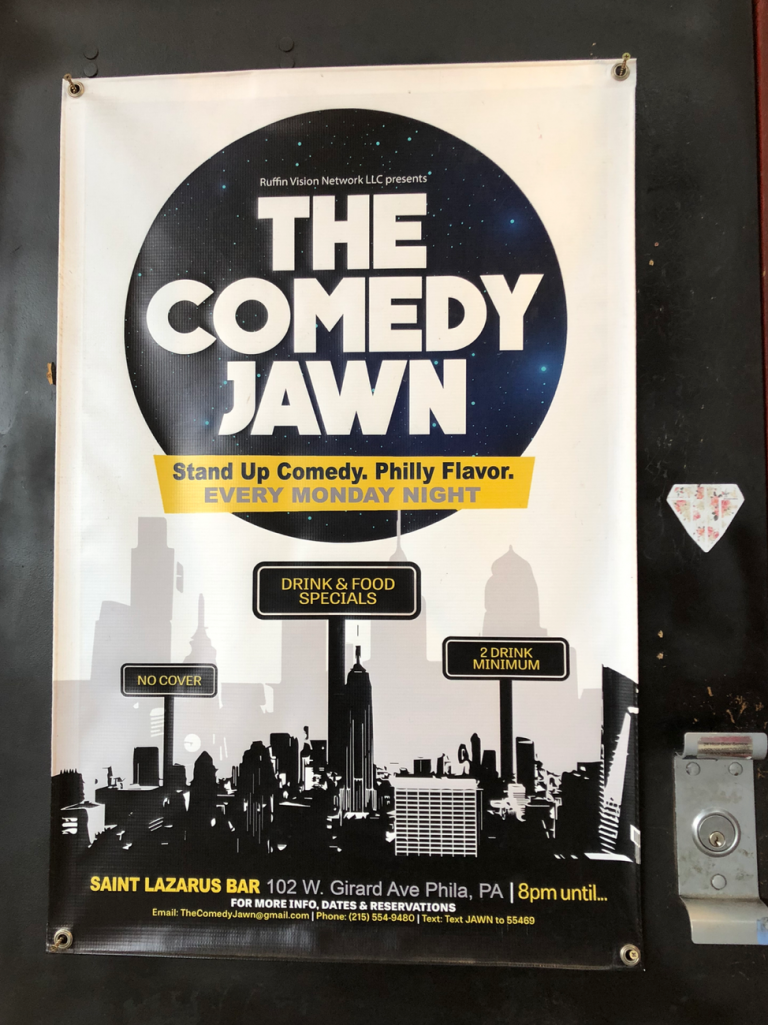Jawn
By Damiano Consilvio and Caitlin Walker
Essay
Jawn is a neutral, all-purpose noun used to reference any person, place, situation, or object. In casual conversation, it takes the place of the word thing. Contrary to popular belief, jawn did not entirely originate in Philadelphia, but developed locally as a variant pronunciation of joint in African American vernacular English.
The meaning of jawn derives from joint in the slang of the New York regional dialect, which then migrated south to Philadelphia, but the word has a much longer history beyond the Americas. As a reference to places or situations, linguists have traced jawn back to English and French texts from the tenth through thirteenth centuries. Jointe (in French) meant one of three things: the body part (elbow joint), the act of joining (as in joint custody of an estate), or, the least obvious, a situation or part of something. Through a process known as semantic bleaching—the loosening of a word’s meaning and its application to other contexts—joint became the prototypical all-purpose noun used in modern conventional English.

Joint retained remnants of its French and Middle English meaning when it arrived in New York via French migration to the region. As users of the word traveled south to Philadelphia in the twentieth century, joint underwent a distinct change in both meaning and pronunciation that resulted in the creation of jawn. While joint generally referred to physical locations or noted a predicament, jawn referenced objects, locations, events, or situational contexts.
African American English speakers in Philadelphia adapted joint and created the new word jawn. The phonetic evolution from joint into jawn resulted from a tendency in African American Vernacular English (AAVE) to remove the final consonant of a word, and replace labial, dental, and velar stops (the p’s, t’s, and k’s) with glottal stops (the -aw or -uh sound made in the throat when pronouncing jawn). When pronouncing the parent word “joint” the larynx produces the sounds: “j – aw – ih – n – t.” AAVE changes this into jawn by emphasizing the glottal ah sound, omitting the ee vowel, and dropping the end consonant t, leaving the sounds j – ah – n. In essence, Philadelphia created the pronunciation of the word, but its meaning already existed.
Jawn has been invoked in popular culture, on social media, and for local business purposes, suggesting the gradual normalization of the word and its progression from slang to standard English. In the early 1980s, a hip-hop group, Funky 4 + 1, used the early derivation of jawn—joint—in the song “That’s the Joint.” In the 2000s, popular Philadelphia rapper Meek Mill (Robert Rahmeek Williams, b. 1987) produced the notable lyrics “Throwback Jawn” and “Repo,” a criticism of the rapper Cassidy (Barry Adrian Reese, b. 1982), in which he uses jawn to take the place of a nominal object. The Twitter page @thejawnmedia, created to promote the music of Philadelphia rap artists, and the hip-hop Internet radio station 97.2 Tha Jawn Philly, both used jawn to refer to a song or producer of songs.

In commercial usage, a “juke joint” was a gathering place, much like a bar or speakeasy, operated and used by African Americans in the southeastern United States during the emancipation era. A vintage restaurant in Philadelphia, the Bourbon House & Juke Joint (later renamed the Twisted Tail) at 511 S. Second Street, adopted this historical milieu. Merchandise in stores espousing Philadelphia culture (such as City-Blue on South Street) introduced shirts and other apparel with phrases like “Philly Jawn” and the like. In popular film, the character Bianca in the movie Creed (2015) used the word while referring to the quality of a cheesesteak.
In 2017, Merriam-Webster acknowledged the rising presence of jawn and the significance of urban Philadelphia culture by publishing an online essay defining and contextualizing the word. Although slang by definition and as of early 2022 not in the Merriam-Webster or Oxford English Dictionaries, the prevalence of jawn in popular culture has promoted it from street-side talk to nearly standard English.
Damiano Consilvio is a doctoral student at the University of Rhode Island. Caitlin Walker is a graduate student at Rutgers University–Camden, focusing on linguistics and aspires to earn a Ph.D. and work in academia. (Author information current at time of publication.)
Copyright 2019, Rutgers University
Updated 2022

